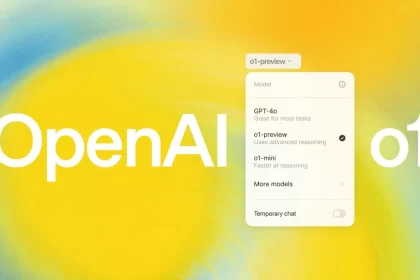Generative AI is a powerful technology that can create new content, insights and solutions from data. But how can businesses use this technology to gain a competitive advantage and accelerate their growth? In a recent interview with VentureBeat, Matt Wood, VP of Product at AWS, shared his insights on how generative AI can create a cycle of positive growth for a business.
According to Hoshio, Wood said that generative artificial intelligence can be used in four main areas. The first three areas are now well known and common and are used by many businesses. These areas include generative interfaces (an interface that is created or generated automatically by AI), search ranking (how search engines prioritize search results), and communication and knowledge discovery (how AI can help find and process information).
A final major area where generative AI can be used is in the creation of automated decision support systems. According to Wood, this is the most challenging yet interesting and impactful area because it allows businesses to solve complex problems using intelligent systems that operate automatically. This is something that companies can build their cycle of positive growth around. Wood said: If a business can create a good system, it can have an advantage over its competitors and solve its complex problems using intelligent systems that operate automatically.
Effects of LLM in organizations
The AWS VP will be speaking at the VB Transform 2023 event in San Francisco next week. This event is a networking opportunity for senior technology executives who want to learn about AI and use it effectively. At the event, Wood will join Google’s Gerrit Kazmeier on a panel discussion to discuss big language models and their impact on leaders.
“The use of large language models (LLM) can improve cybersecurity in enterprises,” Wood said. Suppose a company begins to experience a series of threats that are difficult to identify because they are spread across different parts of the business. However, by using LLM, a company can identify subtle signals in several areas that indicate a cyber attack has occurred.”
LLMs can use embeddings to find connections between data points and identify small differences that are important to the overall pattern.
According to Wood, “It might be hard to notice these differences without LLMs, but now with the help of these large language models these differences are significantly highlighted and much easier to spot.”

Investigating the main causes of cyber attacks
LLMs can automatically investigate the root cause of a cyber attack and explain why the attack occurred using simple, natural language. “Furthermore, LLMs can also understand what puts the company at risk and make recommendations on how to defend against them and protect against future attacks,” Wood said.
Finally, once you’ve reviewed and are satisfied with the proposal to fix a problem (it could be a cyber attack, a vulnerability, or an operational issue), you can simply click a button. After clicking the button, the LLM system executes the necessary codes to fix the problem.
“The current process of detecting and remediating cyber attacks requires a lot of skill and time to find all the necessary information and make the right decision, however, using LLMs is much faster and requires less manpower,” said Wood.
He added: “With LLMs, cyber attacks can be managed automatically without the need for human intervention. “When the system presents its findings to a human, they receive a complete incident report that is easy to interpret and understand without requiring special technical knowledge.”

RCO NEWS

















